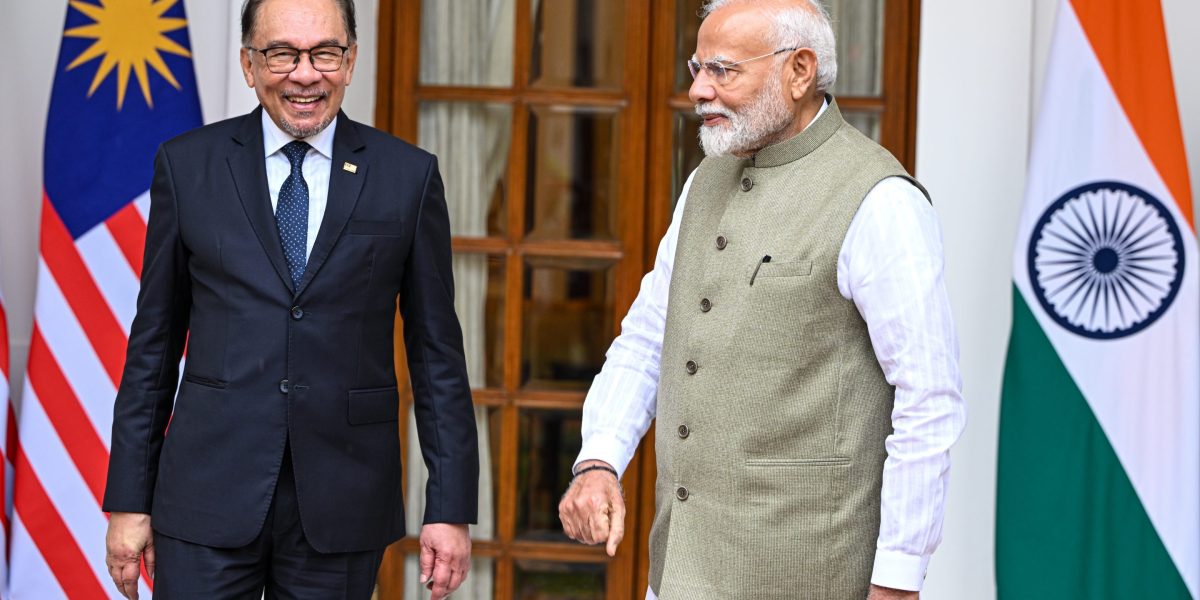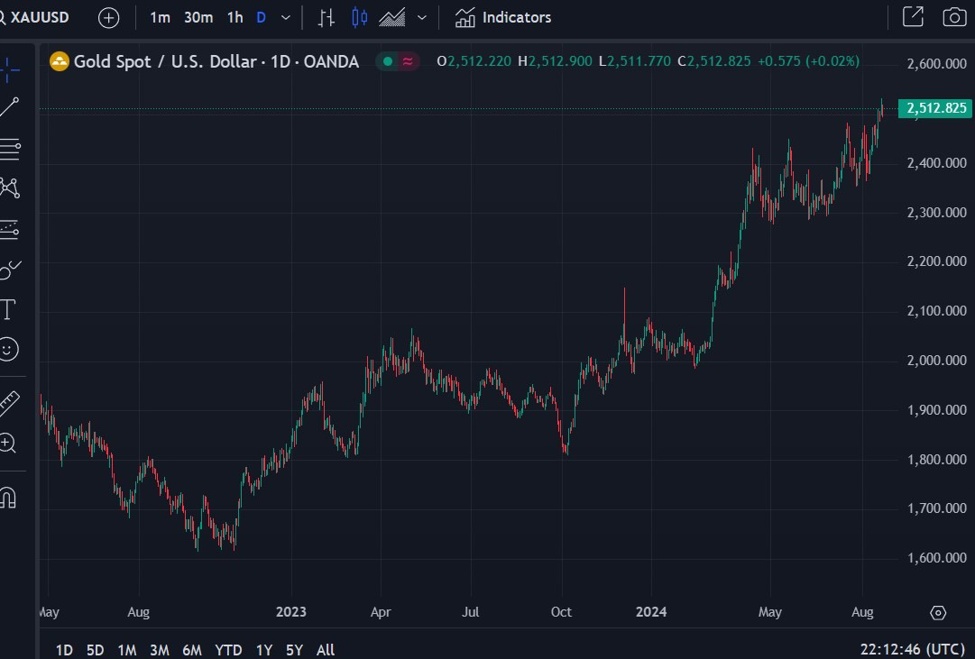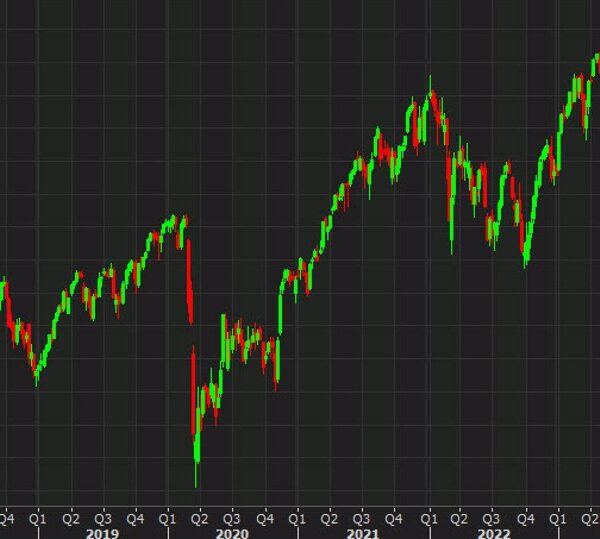BRICS—originally made up of just Brazil, Russia, India, China, and South Africa—is going to need a new name.
After not adding any new members for 13 years, the non-Western international group welcomed Egypt, Ethiopia, Iran, Saudi Arabia, and the United Arab Emirates last August. The floodgates have since been opened: In February, South African Foreign Minister Naledi Pandor claimed that over 30 nations now want to join the international group.
Malaysian Prime Minister Anwar Ibrahim has been vocal about wanting to join the bloc, lobbying Russian, Chinese, and just this week, Indian officials about Malaysia’s application. Thailand also submitted a formal application to join the bloc last June, and officials hope that the Southeast Asian country will be able to join the BRICS summit in Russia this October.
BRICS, which traces its name to a Goldman Sachs report in 2001, has long struggled to find an economic or geopolitical purpose, as its member countries have little in common besides being large and non-Western.
But in recent years, the bloc is increasingly trying to position itself as the voice of the so-called Global South, a term used to describe postcolonial developing economies. It’s an argument that’s picked up steam since Russia’s invasion of Ukraine in 2022, which brought geopolitics back to the fore and highlighted the power of the U.S. in the global economic system.
“For some countries, BRICS can be a counterweight against U.S. economic hegemony,” Rahman Yaacob, a research fellow in the Southeast Asia program at the Lowy Institute, says.
Joining the bloc could also be a way to hedge politically, as the intensifying rivalry between Washington and Beijing risks splitting the world into two opposing groups.
“If the world is going to break into blocs, being in beats being out,” Deborah Elms, head of trade policy at the Hinrich Foundation, says.
Why do Malaysia and Thailand want to join BRICS?
China is already the largest trading partner for Malaysia and other Southeast Asian countries and is also the largest source of developmental aid for a few countries in the region, notes Rahman.
For Malaysia’s Anwar, joining BRICS could be a way to secure trade deals or investments for the Southeast Asian country.
“The intention to join BRICS could prompt Western countries to enhance their investments in Malaysia, or even encourage [Malaysia] to consider applying for membership in Western-aligned alliances, such as the OECD,” Wen Chong Cheah, an Asia-Pacific analyst at the Economist Intelligence Unit, explains.
Malaysia’s semiconductor industry could also benefit from closer ties to China and India, as the two giant consumer markets could buy more Malaysia-made electronics, Cheah explains. BRICS membership could also lead to increased tourism from member countries, particularly China and India.
Thailand may also be interested in BRICS as a way to jump-start its flagging economy. Growth has slowed recently as the country’s tourism industry still struggles to recover from the COVID pandemic.
What is BRICS?
Jim O’Neill, the former chief economist at Goldman Sachs, in 2001 argued that Brazil, Russia, India and China would be the key drivers of global economic growth, coining the term “BRIC.”


Dmitry Kostyukov—AFP/Getty Images
The four governments adopted the name when they formally started the new organization with a 2009 summit in the Russian city of Yekaterinburg. The group added an “S” to its name when South Africa joined in 2010, becoming “BRICS”.
In 2014, the group founded its own development bank, the New Development Bank. Since starting operations in 2015, the bank has cumulatively approved over $32 billion in loans to member countries; China hopes the bank can disburse a further $5 billion in loans this year.
Malaysia and Thailand would be hefty additions to the BRICS group. Both have economies that are twice the size of Ethiopia, and roughly the same size as Iran and Egypt. Malaysia’s GDP per capita is just slightly lower than China’s.
Before its expansion last year, the five countries in the original BRICS already accounted for about 40% of the world’s population and about a quarter of global GDP according to World Bank data.
And with the UAE and Saudi Arabia, BRICS now encompasses almost half the world’s oil supply.
Can BRICS work?
In May, a Thai government spokesperson suggested joining BRICS would help create a “new world order.”
Yet BRICS still has very few achievements to its name. For example, the bloc does not have any formal trade or investment agreements.
China and India, by far the two largest BRICS economies, are not on friendly terms, especially since a deadly border clash in 2020. India is also a member of the Quad, a grouping that also includes Japan, the U.S. and Australia; U.S. officials point to India as a possible counterweight to China’s political and economic rise.
BRICS also includes U.S. rivals like Russia and Iran (as well as China), which means possible joiners like Malaysia and Thailand will need to “carefully balance their engagement” with BRICS, Cheah notes.
Nor is it clear that countries under U.S. sanctions, like Russia, can be a reliable and important trading partners, Rahman suggests.
One new BRICS addition already knows how tricky the balancing act between the U.S. and China can be. The UAE, which has a close military partnership with the U.S., saw its AI startup G42 face pressure from Washington to cut its technology ties to Chinese companies. The startup eventually gave in to the pressure and cut its ties with Huawei.
But countries like Malaysia and Thailand may think the economic upside of joining BRICS is worth the risk—particularly, as Elms notes, as the organization does not have strict requirements to join.















